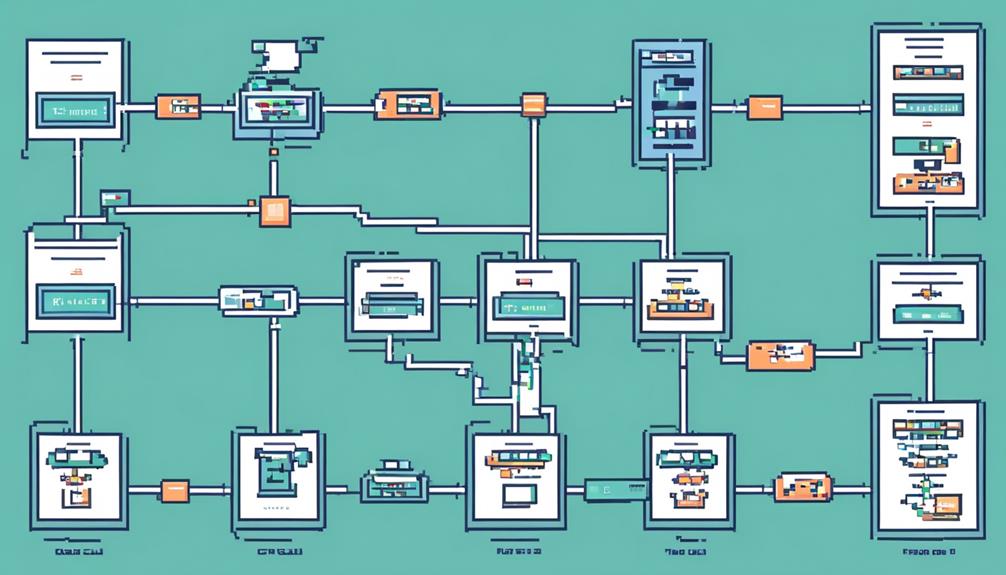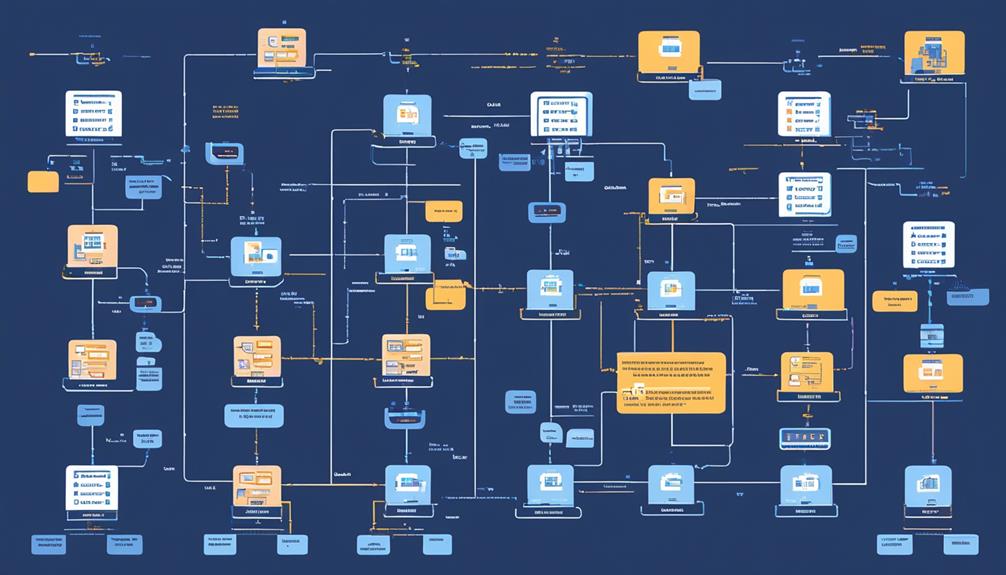In the world of business telecommunications, the efficient management of incoming and outgoing calls is a crucial aspect for maintaining productivity and delivering exceptional customer service. At the heart of this system lies the concept of PBX call routing, a fundamental element that determines how calls are directed within an organization.
Understanding the intricacies of PBX call routing is key to optimizing communication processes and streamlining workflows. From configuring call routing rules to utilizing various factors such as business hours, caller ID, or dialed extensions, businesses can tailor their call routing strategies to meet specific needs.
In this discussion, we will explore how call routing works, the different types of call routing, the benefits it offers, and best practices for implementing an effective call routing system. So, let's embark on a journey to unravel the complexities of PBX call routing and discover the immense value it brings to modern businesses.
Key Takeaways
- PBX call routing efficiently directs incoming calls based on predefined rules and configurations.
- Call routing ensures calls are directed to the right department, individual, or action.
- Different call routing strategies include regular routing, round-robin routing, uniform routing, simultaneous routing, and weighted routing.
- Call routing can be implemented through analog lines, virtual PBX, SIP trunking, or Cloud Phone Systems.
How Call Routing Works

Call routing is a fundamental process in PBX systems that efficiently directs incoming calls to their appropriate destinations based on predetermined rules and configurations. PBX, which stands for Private Branch Exchange, is a phone system used by organizations to manage incoming and outgoing calls. Call routing plays a crucial role in ensuring that incoming calls are directed to the right department, individual, or action, such as voicemail or call forwarding.
In a telephone system, call routing operates in three main phases: qualifying, queuing, and distribution. During the qualifying phase, the PBX system determines which department or individual the incoming call should be routed to based on predefined rules. The queuing phase involves placing the call in a queue until an available channel or extension becomes free. Finally, in the distribution phase, the call is sent to the appropriate destination.
Different call routing strategies are available to organizations, providing flexibility in managing incoming calls effectively. Regular routing directs calls to the next available extension, while round-robin routing distributes calls evenly among a group of extensions. Uniform routing sends calls to the extension with the fewest completed calls, while simultaneous routing rings multiple extensions simultaneously. Weighted routing assigns priorities to different extensions or departments based on predefined criteria.
With the advent of IP PBX and hosted PBX systems, call routing has become even more efficient and flexible. These systems leverage VoIP (Voice over Internet Protocol) technology to route calls over the internet, reducing costs and enabling advanced call routing features.
Setting Up Call Routing
To efficiently configure call routing, organizations must establish specific rules and configurations that direct incoming calls to their appropriate destinations based on predetermined criteria. Setting up call routing on PBX phone systems involves defining how calls are handled and directed within the organization. This process ensures that calls are efficiently routed to the right department or individual, improving overall communication and customer service.
One of the main goals of call routing is to direct off-hours calls to customer support lines and branches during business hours. By setting up time-based routing, businesses can ensure that calls are automatically redirected to the appropriate destination based on the time of day. This ensures that customers receive timely assistance and reduces the chances of missed calls or delays in response.
Call routing also enables the assignment of extensions to office employees, allowing for streamlined call management. Employees can have their own unique extensions, which can be easily dialed by customers to reach them directly. This eliminates the need for customers to navigate a complex menu system and enhances the efficiency of internal communication.
Moreover, businesses can use call routing to establish caller queues, enhancing customer service through informed waiting times. When call volumes are high, callers can be placed in a queue and provided with estimated wait times. This allows customers to make an informed decision about whether to continue waiting or call back later. By managing caller queues effectively, businesses can prioritize urgent calls and ensure that customers are served in a fair and efficient manner.
Detailed phone records and call recording can also be utilized within call routing setups. These features enable businesses to track calls, collect information for training purposes, and provide evidence for liability purposes if required. By recording calls, organizations can ensure that quality standards are met and use the recordings for training new employees or resolving disputes.
PBX systems can help businesses in setting up call routing by offering a range of phone features and functionalities. These systems use VoIP technology for digital signal transmission, enabling flexible and scalable call routing solutions. PBX systems can route calls based on various criteria such as caller ID, time of day, dialed number, or even the availability of employees. They also allow for call transfers between different communication channels, such as transferring a call from a landline to a mobile phone or vice versa.
Types of Call Routing

One crucial aspect to consider when configuring call routing on PBX phone systems is understanding the different types of call routing strategies available. Call routing is a process that determines how incoming calls are directed within a PBX phone system. There are several types of call routing strategies that can be implemented to efficiently handle incoming and outgoing calls.
Regular routing is a basic strategy where calls are distributed in a sequential order, ensuring that each agent or department receives an equal number of calls. Round-robin routing, on the other hand, distributes calls in a circular manner, allowing each agent or department to receive calls in a rotating fashion.
Uniform routing is a strategy that evenly distributes calls based on specific criteria such as the agent's availability or skill level. Simultaneous routing allows multiple agents or departments to receive the same call simultaneously, ensuring prompt and efficient handling of customer inquiries.
Weighted routing is a more advanced strategy that assigns a weight to each agent or department based on their expertise or workload. This ensures that calls are distributed proportionally, taking into account the specific needs of the business.
In addition to these routing strategies, there are also various methods of implementing call routing within a PBX phone system. These methods include analog lines, virtual PBX, SIP trunking, and Cloud Phone Systems. Each method has its own advantages and is suitable for different business requirements.
Understanding the different types of call routing strategies and the methods of implementation is crucial for businesses to effectively manage their internal and external communications. By choosing the right call routing strategy and system, businesses can optimize their customer support and ensure seamless communication with their clients.
Benefits of Call Routing
Enhancing operational efficiency and streamlining communication processes, call routing offers a range of benefits for businesses. By efficiently managing incoming and outgoing calls, a business phone system with call routing capabilities, such as a PBX or a cloud-based phone system, can revolutionize the way organizations handle their communication needs.
Here are four key benefits of call routing:
- Improved Customer Experience: Call routing allows for customized greetings, recorded messages, and music choices. This personalization enhances customer interactions and satisfaction, leaving a lasting positive impression.
- Efficient Call Management: Call routing enables seamless transfer of calls between users and departments. With advanced calling features, such as call forwarding and automated call distribution, calls can be directed to the most appropriate team member or department, ensuring efficient call handling.
- Enhanced Collaboration: With a PBX system, multiple office locations can be connected using the same phone system. This promotes unified communication and collaboration, allowing employees from different locations to seamlessly communicate and work together.
- Optimized Resource Allocation: Call centers can be operated using call routing, enabling businesses to efficiently manage sales teams or customer support departments. By directing calls to available agents or teams, call routing ensures that resources are optimally allocated, maximizing productivity and customer service.
Best Practices for Call Routing

Implementing best practices for call routing is crucial for optimizing communication efficiency and ensuring seamless customer service. By following these best practices, businesses can effectively manage incoming and outgoing calls, leverage PBX features, and enhance their overall phone service.
One important best practice is routing off-hours calls to appropriate support lines and branches. This ensures that customers receive the assistance they need even outside regular business hours. By setting up automated call routing, businesses can direct calls to different departments or branches based on the time of day, maximizing customer service availability.
Assigning extensions to office employees is another best practice that streamlines communication within the organization. With designated extensions, employees can easily transfer calls to the appropriate person or department, reducing call handling time and improving overall efficiency.
Implementing call conferencing is also beneficial. This feature allows multiple parties to join a call, enabling effective collaboration and reducing the need for in-person meetings. By utilizing call conferencing, businesses can enhance productivity and streamline communication during meetings.
To manage incoming calls effectively, setting up caller queues is recommended. Caller queues inform callers about waiting time and position in the queue, reducing caller frustration and improving customer service. This feature helps businesses manage call flow efficiently, ensuring that no calls are missed or neglected.
Lastly, detailed phone records and call recording can provide valuable insights for businesses. These records can help track calls, collect information, and aid in training and liability purposes. By analyzing call records, businesses can identify areas for improvement in their call routing system and enhance the overall customer experience.
Frequently Asked Questions
How Does a Phone Call Get Routed?
A phone call gets routed through a PBX system using various call routing algorithms and protocols, such as Session Initiation Protocol (SIP). Call routing plays a crucial role in the telecom industry as it ensures efficient and reliable communication.
In traditional landline systems, calls are routed through physical connections, while in mobile networks, cellular towers facilitate call routing. Factors like caller ID, network congestion, and call prioritization affect call routing decisions.
Call routing is also critical in emergency services and international telecommunication. Virtual PBX systems offer flexible call routing options, and optimization techniques are employed to improve routing efficiency.
What Is a PBX Router?
A PBX router is a crucial component of a company's internal telephone network. It enables the management of inbound and outbound calls, call forwarding, voicemail, and other phone features. The benefits of using a PBX router include improved call routing efficiency, cost savings, and enhanced communication capabilities.
There are various types of PBX routers available, such as traditional analog systems, on-premise IP PBX, and hosted cloud phone systems. Factors to consider when choosing a PBX router include business needs, configuration options, integration with other communication systems, security measures, and future trends in PBX call routing technology.
How Does PBX Phone System Work?
A PBX phone system is a crucial tool for managing internal communication within an organization. It offers various features and functionalities such as call forwarding, voicemail, and call distribution. There are different types of PBX systems available, including traditional analog, on-premise IP, and hosted/cloud phone systems.
SIP trunks play a vital role in facilitating communication within a PBX system. Integration with CRM software enhances efficiency and productivity. Security measures are implemented to protect against unauthorized access. Scalability options and cost considerations should be evaluated when implementing a PBX system.
Managing a PBX infrastructure may pose challenges, but future trends in PBX technology offer promising advancements.
What Is the Difference Between PBX and Voip PBX?
A PBX (Private Branch Exchange) system is a telephony solution that allows businesses to manage and route their internal and external phone calls.
The main difference between a PBX and a VoIP PBX is the technology used for signal transmission. While traditional PBX systems rely on physical phone lines, VoIP PBX systems use VoIP (Voice over Internet Protocol) technology for digital signal transmission.
VoIP PBX offers several benefits, such as cost savings, scalability, and flexibility. It also includes key features like call routing, call forwarding, voicemail, and auto-attendant.
However, implementing a VoIP PBX can present challenges, such as network reliability and security considerations.

